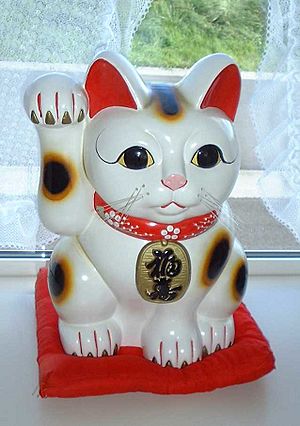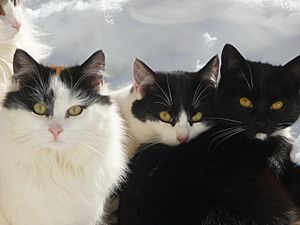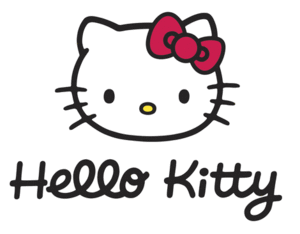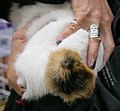Japanese Bobtail facts for kids
Quick facts for kids Japanese Bobtail |
|
|---|---|
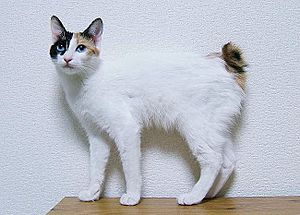
Female Japanese Bobtail
|
|
| Domestic cat (Felis catus) |
The Japanese Bobtail is a special kind of domestic cat. It has a short, "bobbed" tail. This tail looks more like a rabbit's tail than a typical cat's tail. These cats first came from Japan and Southeast Asia. Now, you can find them all over the world. People in Japan have known about this breed for hundreds of years. They often appear in old stories and artwork.
Japanese Bobtails can have almost any color or pattern. Cats that are mostly white with three colors (called calico) are very popular. Japanese people and cat lovers especially like them. These cats are often seen in old Japanese stories. Other colors are also accepted by breed standards.
Contents
History of the Japanese Bobtail
Some people believe that short-tailed cats came to Japan over 1,000 years ago. They might have arrived from the Asian continent. In 1602, the Japanese government made an important rule. They said all cats should be set free. This was to help protect the country's silkworms. Rodents were a big problem for the silkworm industry.
At that time, it was against the law to buy or sell cats. So, bobtailed cats started living on farms and in the streets. This is how Japanese Bobtails became known as the "street cats" of Japan.
Many people think Bobtail cats bring good luck. Owning one is believed to bring wealth and happiness. The three-colored, Mi-Ke (pronounced 'mee keh') cat is seen as the luckiest color for this breed. There is a famous Japanese statue of a cat with its paw raised. It is called Maneki Neko, which means 'beckoning cat'. This statue is an artist's idea of the bobtail cat. You can often see these statues in Japanese shops. People believe they attract good people and customers.
What Makes Japanese Bobtails Special?
Personality and Behavior
Japanese Bobtails are great for families. They are very loving and make wonderful pets for children. They like to "talk" to people using soft, chirpy sounds. These cats are also very attracted to water. They are super smart and love to play. They are always full of energy and can be quite mischievous!
Generally, these cats are active and intelligent. They really enjoy being around humans. It's easier to teach them tricks than many other cat breeds. They might even enjoy learning to walk on a harness and leash. They also like playing games like fetch. They are very watchful and notice a lot around them. People consider them to be very "talkative" cats. They often make sounds to interact with people. Their soft voices can make many different tones. This led to an old belief that they can sing!
Grooming Needs
This breed has short fur. Because of this, they shed only a little bit. Their coat is also very easy to groom. You won't need to spend much time brushing them.
Health and Lifespan
Like all animals, Japanese Bobtails can have some health issues. These might be related to their genes. However, Japanese Bobtails are generally healthy cats. The gene that causes their short tails does not cause problems with their spine or bones. On average, these cats live for about 9 to 15 years.
Japanese Bobtails in Popular Culture
The famous manga character Hello Kitty looks like a Japanese Bobtail. She is a great example of modern kawaii (which means "cute") pop culture.
The character Muta from the movie The Cat Returns was inspired by a stray Japanese Bobtail. This cat often visited Studio Ghibli, where the movie was made. Japanese Bobtails also often appear in other anime shows made in Japan.
Mochi, who is Hiro Hamada's cat in the Disney film Big Hero 6, is also a Japanese Bobtail.
In the 2017 book Star Trek Cats by scientific illustrator Jenny Parks, Hikaru Sulu is shown as a Japanese Bobtail.
Images for kids
See also
 In Spanish: Bobtail japonés para niños
In Spanish: Bobtail japonés para niños


